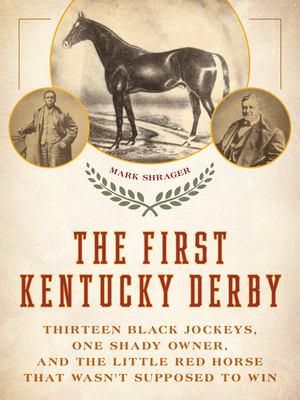The First Kentucky Derby: Thirteen Black Jockeys, One Shady Owner, and the Little Red Horse That Wasn't Supposed to Win

The First Kentucky Derby: Thirteen Black Jockeys, One Shady Owner, and the Little Red Horse That Wasn't Supposed to Win
Today's Kentucky Derby is a multimillion-dollar spectacle involving corporate sponsorship, worldwide media coverage, and an annual citywide festival in Louisville. Over its nearly century-and-a-half history, the Kentucky Derby has grown to be one of the biggest sporting events of the year, attracting 150,000 spectators at the track and nearly 15 million television viewers on the first Saturday each May. But 1875, the year of the first Derby, was a different time. The Louisville Jockey Club track, which would one day bear the name "Churchill Downs," was a small structure that might, on its best day, provide seating and standing room for 12,000 spectators. The grandstand was plain and functional and included a section reserved for bookmakers, whose trade was legal and who operated in the open. Perhaps most significantly, the majority of jockeys in the race were Black, in stark contrast to the present-day Derby, where participation by African-American jockeys is rare. In The First Kentucky Derby, racing historian Mark Shrager examines the events leading up to the first "Run for the Roses," the unsuccessful effort that the winning owner might have made to rig the race for his preferred horse, and the prominent role played by African Americans in Gilded Age racing culture--a holdover from pre-emancipation days, when slaves were trained from birth to ride for their wealthy owners and grew up surrounded by the horses that would be their life's work.
237.75Lei
237.75Lei
Livrare in 2-4 saptamani
Descrierea produsului
Today's Kentucky Derby is a multimillion-dollar spectacle involving corporate sponsorship, worldwide media coverage, and an annual citywide festival in Louisville. Over its nearly century-and-a-half history, the Kentucky Derby has grown to be one of the biggest sporting events of the year, attracting 150,000 spectators at the track and nearly 15 million television viewers on the first Saturday each May. But 1875, the year of the first Derby, was a different time. The Louisville Jockey Club track, which would one day bear the name "Churchill Downs," was a small structure that might, on its best day, provide seating and standing room for 12,000 spectators. The grandstand was plain and functional and included a section reserved for bookmakers, whose trade was legal and who operated in the open. Perhaps most significantly, the majority of jockeys in the race were Black, in stark contrast to the present-day Derby, where participation by African-American jockeys is rare. In The First Kentucky Derby, racing historian Mark Shrager examines the events leading up to the first "Run for the Roses," the unsuccessful effort that the winning owner might have made to rig the race for his preferred horse, and the prominent role played by African Americans in Gilded Age racing culture--a holdover from pre-emancipation days, when slaves were trained from birth to ride for their wealthy owners and grew up surrounded by the horses that would be their life's work.
Detaliile produsului










